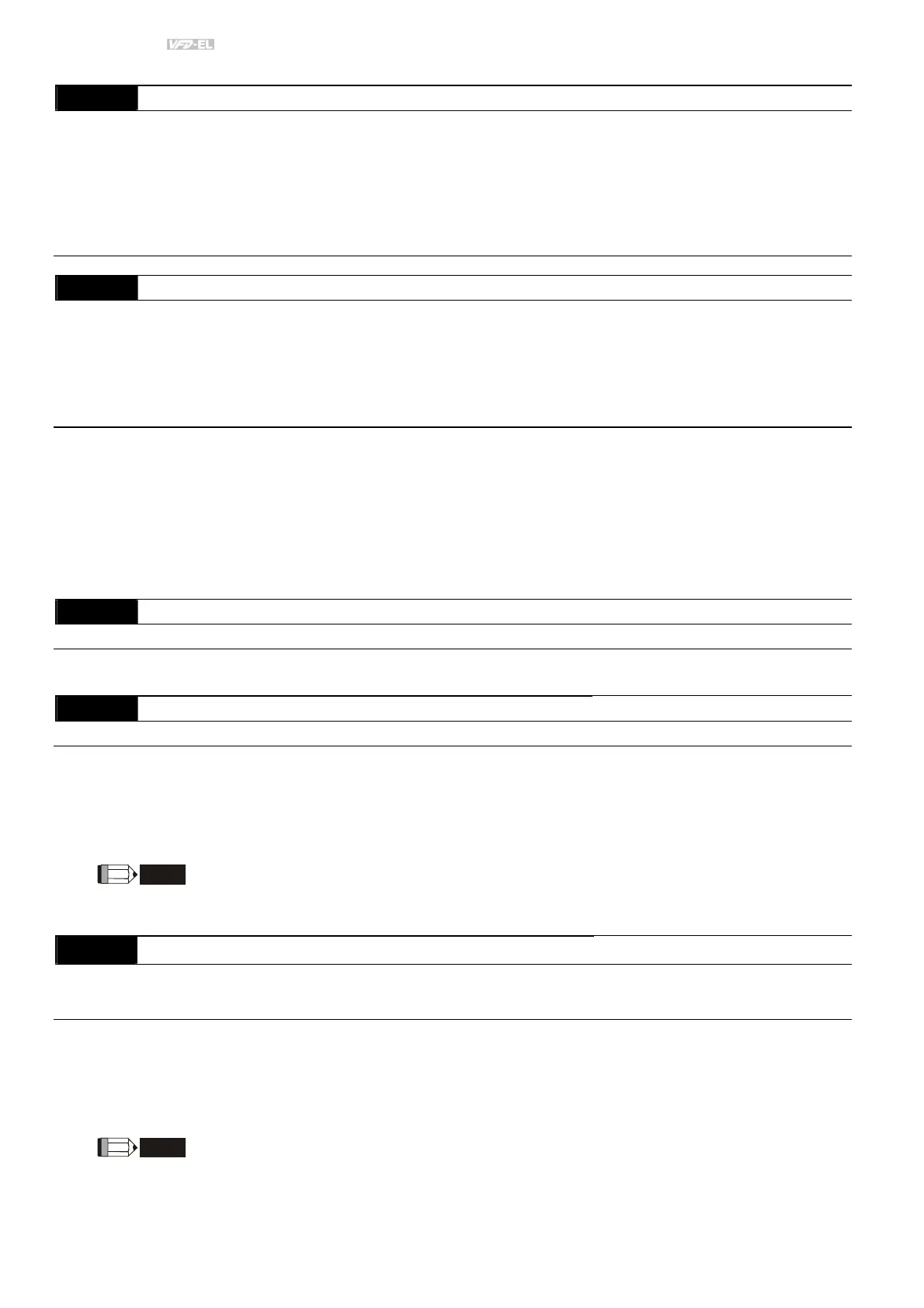Chapter 4 Parameters|
||
|
4-84 Revision 2016/03, 6ELE, V1.14
Group 10: PID Control
10.00
PID Set Point Selection
Factory Setting: 0
Settings 0 Disable
1 Digital keypad UP/DOWN keys
2 AVI 0 ~ +10VDC
3 ACI 4 ~ 20mA
4 PID set point (Pr.10.11)
10.01
Input Terminal for PID Feedback
Factory Setting: 0
Settings 0
Positive PID feedback from external terminal AVI (0 ~ +10VDC)
1
Negative PID feedback from external terminal AVI (0 ~ +10VDC)
2
Positive PID feedback from external terminal ACI (4 ~ 20mA)
3
Negative PID feedback from external terminal ACI (4 ~ 20mA)
Note that the measured variable (feedback) controls the output frequency (Hz). Select input terminal
accordingly. Make sure this parameter setting does not conflict with the setting for Pr.10.00 (Master
Frequency).
When Pr.10.00 is set to 2 or 3, the set point (Master Frequency) for PID control is obtained from the AVI or
ACI external terminal (0 to +10V or 4-20mA) or from multi-step speed. When Pr.10.00 is set to 1, the set
point is obtained from the keypad.
Negative feedback means: +target value – feedback
Positive feedback means: -target value + feedback.
10.11
Source of PID Set point Unit: 0.01
Settings 0.00 to 599.0Hz Factory Setting: 0.00
This parameter is used in conjunction with Pr.10.00 set 4 to input a set point in Hz.
10.02
Proportional Gain (P) Unit: 0. 1
Settings 0.0 to 10.0 Factory Setting: 1.0
This parameter specifies proportional control and associated gain (P). If the other two gains (I and D) are
set to zero, proportional control is the only one effective. With 10% deviation (error) and P=1, the output will
be P x10% x Master Frequency.
When P is greater than 1, it will decrease the deviation and get the faster response speed. But if setting too
large value in Pr.10.02, it may cause the increased deviation during the stable area.
The parameter can be set during operation for easy tuning.
10.03
Integral Time ( I ) Unit: 0.01
Settings 0.00 to 100.0 sec Factory Setting: 1.00
0.00 Disable
This parameter specifies integral control (continual sum of the deviation) and associated gain (I). When the
integral gain is set to 1 and the deviation is fixed, the output is equal to the input (deviation) once the
integral time setting is attained.
It can use integral time to eliminate the deviation during the stable area. If setting too large value in Pr.10.03,
it may cause lower system response.
The parameter can be set during operation for easy tuning.

